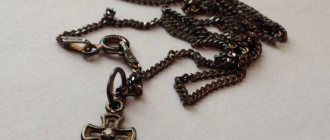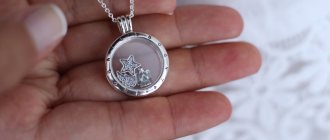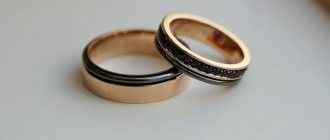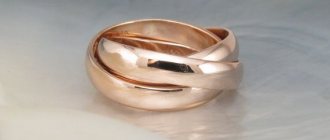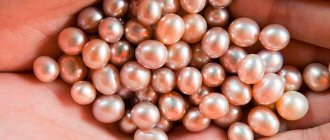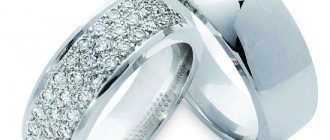Silver plating allows you to give products special properties and decorativeness. You can order silver plating on any product at the electroplating section of our company. Silver can be deposited on various surfaces to produce a layer with increased electrical conductivity.
Silver coating increases the wear resistance of bearings that operate on the rolling or sliding principle. This technology is also used to create reflectors, optical instruments and decorative products.
Silver plating methods
Unlike sterling silver and sterling silver jewelry, silver plated jewelry is not actually made of silver at all.
In fact, silver plated jewelry is made from various base metals such as brass or copper and then coated with sterling silver. The most common silver plating methods currently used are electroplating, chemical wet deposition, and vacuum deposition. Electroplated silver is the most popular because it has excellent performance characteristics. After all, it is important that the surface is not only of the highest quality, but also has a beautiful appearance. And in order for the product to please you, it is necessary to give preference to products from trusted manufacturers. This is exactly what is presented in the online store “LANGERY”, among the products of which everyone can find a suitable solution for any occasion.
Features of the technology
Silvering refers to galvanic processes that can be carried out with the appropriate equipment. But the electrolyte solutions used contain dangerous substances, so you need to work with them with extreme caution. Before proceeding with the direct application of silver, the surface to be treated must be prepared. The course of the process largely depends on the composition of the material from which the product being silvered is made. The best performance characteristics are achieved by a silver coating applied to a layer of copper or nickel. If a product made of alloys with a complex composition, such as aluminum, is subjected to silvering, then it is necessary to treat the surface with zinc. A three-step electrochemical process is then carried out. The product is kept in three baths, each of which contains a solution with a higher concentration of silver. Over time, the finished coating may become covered with iridescent spots, which then turn dark brown or black. To prevent their appearance, the silver coating is subjected to chemical passivation in a solution of dichromates, having previously been treated with an acid or alkali solution to activate it. If the coating is applied to a product for which external decoration is not important, then the silver layer can be painted black. To do this, another electrochemical reaction is carried out, where a solution containing acetone, sulfuric acid, sodium sulfide and sodium thiosulfate is used as an electrolyte. This coating is characterized by increased wear resistance.
Silver is a soft metal; it is not able to protect the product from mechanical damage. But it protects the metal from corrosion and increases its electrical conductivity. Silver plating is in demand in the electrochemical industry, in the production of optical equipment, as well as in jewelry.
Benefits of silver plating
Silver plating offers several benefits. Due to the strength of silver, this type of coating provides excellent corrosion resistance to the base material and the product as a whole. At the same time, the final surface has excellent aesthetic properties. Unfortunately, silver plated items can still tarnish, but due to the fairly low price, silver plating is a cheaper alternative to gold plating, so some downsides are to be expected
Thus, silver-coated products have the following properties:
- Corrosion resistance;
- Wear resistance;
- Durability;
- Aesthetics.
Depending on the type of use of the plated material, the silver plating has different thicknesses.
As for the disadvantages, this may be an individual allergic reaction. Or the silver may tarnish over time. Like gold-plated jewelry, silver plating simply means a very thin layer of silver applied to a base metal. The amount of silver used for plating is very small. It is ideal for use in inexpensive costume jewelry, but is not durable or very strong.
Types of silver plating
Silver can be applied in one of two ways:
- electrochemical. The deposition of silver onto the product occurs as a result of an electrochemical reaction that occurs after passing an electric current through an electrolyte solution;
- The chemical method allows silver to be deposited onto the surface being treated without the use of current sources. Various solutions are used to carry out this process, the most popular being silver cyanide.
The thickness of the silver layer can vary from 2 to 30 microns. If silver is applied to metals such as tin, iron, steel, zinc and cast iron, then the products are first copper-plated. This results in a more even coating of silver with high adhesion. Silver made in this way will be more reliable and durable. Copper application allows even plastic products to be coated with silver.
Rules of care
Silver-plated jewelry fades over time. However, silver plated jewelry is more durable than sterling silver due to the base metal, but it is easier to clean. There are a few things you can do to prevent your silver plated jewelry from tarnishing:
- Remove silver jewelry for tasks requiring contact with liquids and chemicals;
- The less often you wear jewelry in general, the slower the coating fades;
- Store jewelry made from the same metals/platings in the same container;
- Sulfur is the main reason why silver loses its shine and turns black. To minimize exposure, store jewelry in airtight containers lined with anti-tarnish paper;
- The thinner the layer of silver, the less the product will last;
- Avoid excessive polishing or cleaning of silver jewelry. This can cause unwanted wear, which can cause the coating to corrode faster than normal.
Looking for advice on how to store silver-plated jewelry to prevent tarnishing? It is important to ensure minimal exposure to air and humidity. For example, store them in sealed bags that can seal tightly, or keep silver jewelry next to silica bags, which will help absorb some of the moisture.
Why is rhodium so expensive?
Rhodium is a noble precious metal from the group of platinum metals. It was first discovered and described in 1803 in England while studying the properties of platinum ores. In the earth's crust, its content is extremely small - 1 * 10 -7%, and most of it (about 80%) is located in North and South America, while no more than 31 tons are mined per year. This explains its high cost as a rare earth element. These days, the cost of rhodium is significantly higher than the cost of gold, silver and platinum.
Jewelry made from pure rhodium will be unaffordable for the mass buyer and will remain uselessly sparkling in store windows. And this is the main reason why it is inappropriate to use rhodium in its pure form. In addition, pure rhodium is a rather brittle metal and can easily break. The technology of thin-layer coating of silver products with rhodium is much more widely used, which gives a special shine and protection from mechanical stress to the resulting jewelry, which is explained by the high strength of this metal.
In addition to its strength, rhodium is characterized by high chemical resistance to strong oxidizing agents, which leads to another important use of rhodium as a component of catalysts for the production of nitric acid and as part of the catalytic converter in cars to reduce emissions of carbon monoxide and incompletely burned fuel particles.
Where can I buy
Naturally, the main question for all those who would like to purchase high-quality silver-plated jewelry is the choice of place of purchase and cost. As for ours, there is a huge selection of products here, the cost of which can pleasantly surprise you. Our company employs specialists whose level of competence can find a solution in any situation and select the ideal position for each buyer. At the same time, the range is constantly expanding, and therefore you can always find stylish products for the most demanding customers.
Rhodium plated silver
When making jewelry from silver, jewelers take into account the wishes of the buyer, in particular the need for rhodium plating. As a rule, in addition to improving attractiveness and protection from various types of influences: chemical, mechanical or physical, the protective layer helps slow down the process of metal corrosion, tarnishing or darkening of jewelry made of silver, reduces the risk of developing allergic reactions to contact with silver in people with increased sensitivity.
It should also be noted that rhodium is absolutely safe for adults and children, as well as for pets: this chemically stable metal does not react with human skin secretions and does not form toxic compounds with them. That is why rhodium plated silver jewelry has a long service life, retaining its consumer properties for a long time.
Rhodium plating technology
Thus, the dissolved rhodium ions receive electrons from the anode, are reduced and are uniformly deposited on the jewelry in the form of a thin metal layer, which gradually thickens. This process, called galvanization, continues until the required thickness of the outer metal layer is achieved, which is achieved by adjusting the current strength with a rheostat and depends on the duration of the procedure.
As a rule, this takes 1-3 minutes, the current voltage is 2-4 V. In this case, it is necessary to control the uniformity of the application of the rhodium layer. After galvanization, the jewelry becomes noticeably lighter, acquiring the bright shine characteristic of rhodium.
If several items are coated in a row, the concentration of rhodium in the solution is significantly reduced due to its transfer to the jewelry. Therefore, to maintain the required concentration of rhodium, a refreshing solution (electrolyte reducer) should be regularly added to the solution.
Cost of reagents for rhodium plating
Today, the cost of these solutions, depending on the concentration of rhodium and the volume of the bottle, is 150-230 thousand rubles. for 100 ml. The cost of the electrolyte reducer is even higher - about 600 thousand rubles. And the preparatory degreasing procedure requires special reagents, the cost of which is about 600 rubles per liter.
You can find cheaper prices by comparing products from different manufacturers who have an official website on the Internet. Pay attention to sellers' promotions: during such periods the price may be even lower.
Another important detail: you may not be sold all of the listed reagents if you do not have the appropriate documents: in addition to the certificates required for an individual entrepreneur, you will need confirmation of the right to work with precious metals. Do not neglect this requirement under any circumstances, so as not to violate the federal law “On Precious Metals and Precious Stones.”

